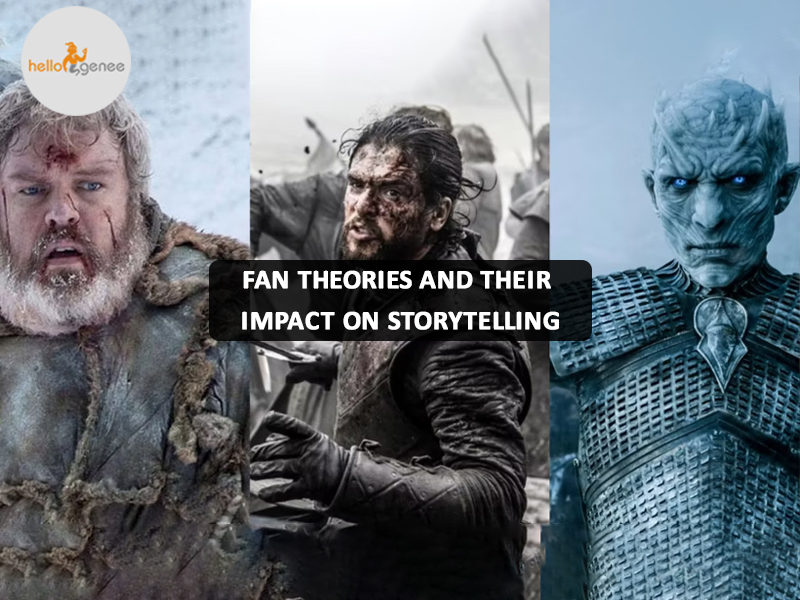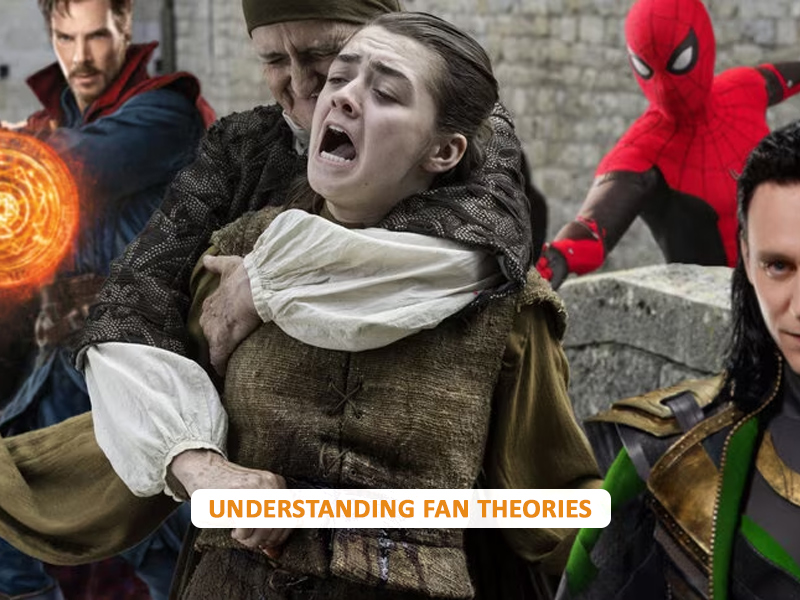Fan Theories and Their Impact on Storytelling
In that respect, fan theories have become an integral part of modern storytelling that forms how narratives are consumed, interpreted, and created. Theories created by devoted fans, plumbing deep into the intricate details of favorite stories, often give new insights into or even imaginative extensions to the story material. The lines following are a discussion of how fan theories are impacting storytelling, underpinned by analysis in research using examples in storytelling to evidence their influence.
Understanding fan theories
Fan
theories refer to devices created by fans to explain certain characters, plot
lines, or deeper meanings of stories. Quite often, these will be coupled with
meticulous analysis of the source material in the form of books, movies,
television shows, and games. The fans would then begin to probe into every
single detail for possible hidden meanings and relations that might otherwise
pass by.
For
instance, one of the famous fan theories of the "Harry Potter" series
suggests that Professor Dumbledore is a time-traveling Ron Weasley. While it
does seem absurd, it just goes on to prove how much creativity and in-depth
analysis is done by the fans.
The Role of Narrative Analysis in
Research
Narrative
analysis in research is a method for understanding how stories are constructed
and how they really work. These are concerned with things within a
narrative—strategies, structures, and kinds of characters—through which deeper
meanings and insights are obtained. As many fan theories do by deconstructing
narratives altogether, they intend to reconstruct new meanings from them.
Narrative analysis in research offers scholars the ability to critically examine stories for their cultural and social significance within academic contexts. Much the same, fan theories provide a grassroots level of narrative analysis that offers unique perspectives, which in turn further densify understanding of the story as a whole.
Storytelling Explained: The Power of
Fan Theories
The
core of storytelling is an event that connects an audience and provokes an
emotional response. When fans do major theorizing, advanced levels of
engagement with the story occur, deepening ties to the subject matter. This
sort of interaction can impact storytelling in many ways:
Higher Engagement: Fan theories get fans
participating and arguing with one another within the community. This might
give way to higher viewership or readership in search of further details to
prove or disprove their theories.
Expanding Story Worlds: Most of the time, fan
theories expand a story beyond what the creators have given. Any such extension
will keep the story alive long after it has officially ended, thereby retaining
interest and excitement among fans.
Creator interaction: Sometimes, creators actually
open their eyes to fan theories and even include them in their works. In such
cases, that interaction may produce a dynamic feedback loop, by means of which
the fans would actually influence the direction that a story takes, increasing
their commitment and sense of being valued.
Storytelling Stories Examples:
Influence of Fan Theories
The
influence that fan theories have had on storytelling will be explained by some
famous examples. These examples would point out how often the narration gets
shaped by fan engagement, and sometimes creators get influenced by it.
Example 1: "Star Wars"
From
this, the "Star Wars" franchise has birthed many fan theories across
the decades. One of the more famous ones surmised that Jar Jar Binks, a
much-maligned character from the prequel trilogy, was actually a Sith Lord.
Though it was never confirmed, the theory really got a lot of traction that
showed creative and analytical capabilities from the fan base.
It
also tended to emphasize just how fans take up and even reinterpret intuitively
undervalued characters, thereby bringing further depth to the narrative. While
the authorship by creator George Lucas is not confirmed, the buzz it sent out
was quite effective in keeping the fans excited and inquisitive about the
series.
Example 2: "Game of
Thrones"
Another
very good case is that of "Game of Thrones," where fan theories
absolutely played their part in letting viewers go through a great experience.
One of the most prevalent theories was "R+L=J," which hinted at Jon
Snow's origin not from Eddard Stark but as a product of Rhaegar Targaryen and
Lyanna Stark. Indeed, this turned out to be right, as was confirmed by later
seasons.
The
fact that it was a fan theory that validated excited fans and showed just how
closely they followed the story and pieced together clues. This kind of
anticipation and speculation keeps an audience on their toes, patiently waiting
for each new episode to come out to see if their predictions will come true.
Example 3: "Westworld"
Notably,
another hotbed for fan theories was HBO's "Westworld." Such a
labyrinthine narrative structure—with its number of multiple timelines and
hidden identities—screams to the fans to dissect and theorize about the story's
real nature. A very famous theory held that William and the Man in Black were
the same person but in different timelines. Later on, this was revealed to be
true, showing that fan speculations could match the vision of creators.
The
"Westworld" theories were interactive, allowing viewers to become
much more involved with the details of the show, hence making their experience
much better. The theories became part of the storytelling; the fans were
insightful, often predicting accurately, hence proving that crowd-sourced
analysis is magic.
How Fan Theories Influence Creators
More
and more, writers of popular narratives are becoming very aware of this
powerful element of fan theories. Some wittingly give clues away to a certain
degree, with ambiguities and storylines open to speculation for the fans to get
worked up over. This may be the difference between turning an everyday setup
into a much more immersive and engaging experience for fans.
Some
have even taken active interest in fan theories through social media,
interviews, and other platforms. Acknowledging and discussing them furthers
bridging the relationship with the audience for a sense of community and shared
ownership of the story.
Narrative Analysis in Research:
Bridging Fans and Scholars
Conducting
narrative analysis in research is done to delve deeper into the stories, as is
done for fan theories. Scholars study many fan theories to understand audience
engagement and the cultural influences of the narratives. Where academic
research and fan culture overlap, this underlines the role of storytelling in
society.
For
example, researchers can assess how fan theories about "Harry Potter"
reflect the larger cultural themes of the fight between good and evil, the role
of friendship, or even the complex question of identity. It is in this study
that scholars will be capable of using these theories to better understand how
stories find reception with audiences and inform their perception.
Conclusion
Fan
theories have become a crucial part of contemporary storytelling, where they
increase the active participation of audiences, lead to the replenishment of
narrative worlds, and at times can even influence the direction of the story.
Through the techniques used, which are directly akin to those employed by
narrative analysis in a research context, fans make reading a richer and more
dynamic process. Since storytelling is a very interactive and frequently
participatory process, as many variant examples of a story of storytelling
easily show, the cooperation of fan theories and storytelling results in a more
intensive and immersive experience for all participants.
If
you are a big fan who would simply like to understand the story in a more
intensive manner or an author who would like to get under the skin of his
readers, fan theory is affecting storytelling. With an open mind towards fan
dynamics, one can end up with rather deep narratives that will draw in
audiences emotionally.
Stay
tuned to our blog for more great insights and talks on the science behind
storytelling and narrative analysis. Let us explore the world of exciting
stories and the fans who make these stories come alive.













Comments